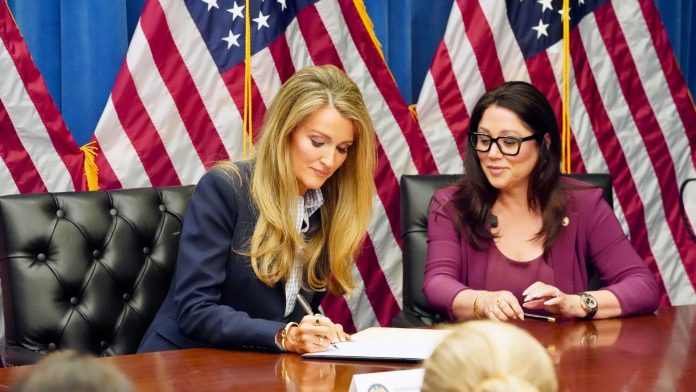The U.S. Small Business Administration (SBA) and the Department of Labor (DOL) have agreed to sign a new Memorandum of Understanding (MOU), aimed at boosting the American manufacturing sector, particularly among small businesses, which account for 98% of U.S. manufacturers.
According to Labor Secretary Lori Chevez-DeRemer, she emphasized the importance of this partnership, stating, “Under President Trump’s leadership, this administration is working tirelessly to restore America as the world’s manufacturing superpower.” She added that the MOU will enhance workforce readiness through expanded Registered Apprenticeships and other hands-on training initiatives aimed at benefiting both small and large manufacturers.
The recently signed Memorandum of Understanding (MOU) between the U.S. Small Business Administration (SBA) and the Department of Labor (DOL) strengthens the connection between capital access, contracting support, and workforce development. This strategic alignment combines the SBA’s financial tools with the DOL’s job training programs, creating new opportunities for small business owners, particularly those in the manufacturing sector.
Moreover, the collaboration aims to help entrepreneurs more effectively hire, train, and retain talent while streamlining access to vital funding and supply chain resources.
SBA Administrator Kelly Loeffler echoed the urgency and potential of the partnership, noting that U.S. manufacturers are “spring-loaded for growth” under the America First agenda. “I’m excited to work alongside Secretary Chavez-DeRemer to cultivate a pipeline of skilled workers and capital to support their growth in a powerful new era of Made in America,” she said.
Through this MOU, small manufacturers gain access to SBA-led cross-agency training on available loan programs and increased exposure to over a million domestic suppliers via tools like the Onshoring Portal. These efforts aim to reduce the country’s reliance on foreign supply chains and foster economic resilience.
For small business owners, practical applications include adopting Registered Apprenticeship programs to upskill existing workers and attract new talent, leveraging SBA loan training to finance equipment or facility upgrades, and engaging with DOL-led initiatives to build networks and strengthen business partnerships.
However, challenges remain. Business owners may still face difficulty navigating federal programs and ensuring that training aligns with their specific labor needs. Additionally, the upfront costs of implementing workforce development initiatives or modernizing operations may require significant financial investment. In these cases, SBA financing remains a vital tool for overcoming these barriers and ensuring long-term competitiveness.
This agreement is a crucial step in promoting American manufacturing and ensuring that small businesses have the workforce and capital resources necessary to thrive in today’s economy.




 ASBN, from startup to success, we are your go-to resource for small business news, expert advice, information, and event coverage.
ASBN, from startup to success, we are your go-to resource for small business news, expert advice, information, and event coverage.